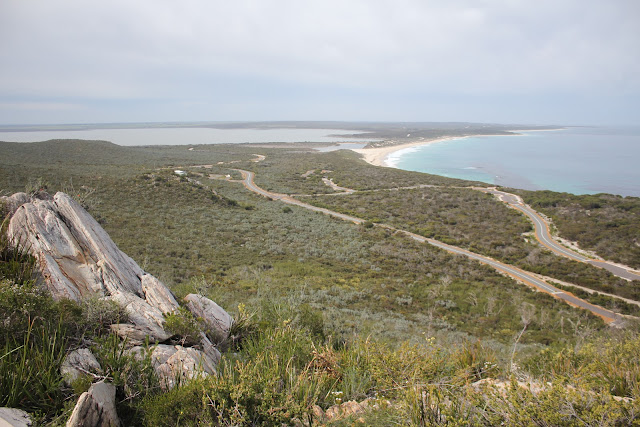Woke up cold and unimpressed with the accommodation, but still took a while to get going in the morning, which was becoming a recurring theme. Another recurring theme that unfortunately continued today was the on-off showers.
Plan for the day was to head west and aim for Augusta, in the south western corner of WA (and therefore Australia). First stop off was Fernhook Falls, which sounded attractive given the amount of rain the area has had but wasn't as spectacular as we thought. It turns out the river that runs down the falls is full of tanin so the falls were brown and foaming everywhere, so it looked like shit... literally.
Further up the road near the turnoff for Northcliff (our turn-off for Augusta) we did the 48km tourist loop through more karri forest in the Shannon National Park. The southern loop was pretty good with huge karri trees soaring 50-60m high. The purple-crowned lorikeet is supposed to be found here but we heard and saw no evidence while there. The northern loop wasn't as interesting and didn't offer as many spots to pull over and look at things.
We took the turnoff for Northcliff and made ways to Pemberton; in theory a more scenic route rather than taking the highway further north and then SW to Pemberton, which I think paid off.
We stopped in Pemberton for lunch at a local cafe, had a look at what there was to do, assessed the weather and decided to just move on to Augusta. We stopped on the way to check out Beedelup Falls, which wasn't as poo-brown as Fernhook Falls earlier today.
Not a huge amount of traffic in this corner of the state, which was good. The drive across the less-populated, highly vegetated south-west corner of the country kind of reminds me of Fiordland in NZ, which is also the south-west corner of the country, although Australia's south west is much less wild, much less vegetated and heaps flatter (though still plenty of rolling hills & mountains) than Fiordland. Maybe it was the on/off rain that makes it feel similar? Or that we're exploring it late in our trip?
One into the farmland near Augusta it's a fairly straight forward drive into town. When we arrived in the late afternoon it wasn't raining and the sun was poking through some holes in the clouds so we took the opportunity to check out the light house and historic water wheel at Cape Leeuwin. The water wheel was built in the late 1800's and was hooked up to a flow of water from a spring to pump water up to the light house. The wheel, which was made of wood, as since been calcified in lime.
Augusta at this time of year (August!) is a fairly quiet sort of town - not a lot of action going on, which is fine with us. Still very pretty coasts and the inlet looked very inviting for exploring on a boat. We've passed a number of waterways that I'd love to paddle and explore in a kayak one day. The one caravan park we wanted to stay at was closed for winter... Boo!!! Obviously the owners don't think it's economically viable to stay open outside the peak season.
Rain was still a threat so we checked into a serviced motel room for the night rather than set up the tent. Thankfully it had a new reverse-cycle heater/air conditioner and the bedroom and kitchen were separate, so we were much more comfortable than the previous night.


















































